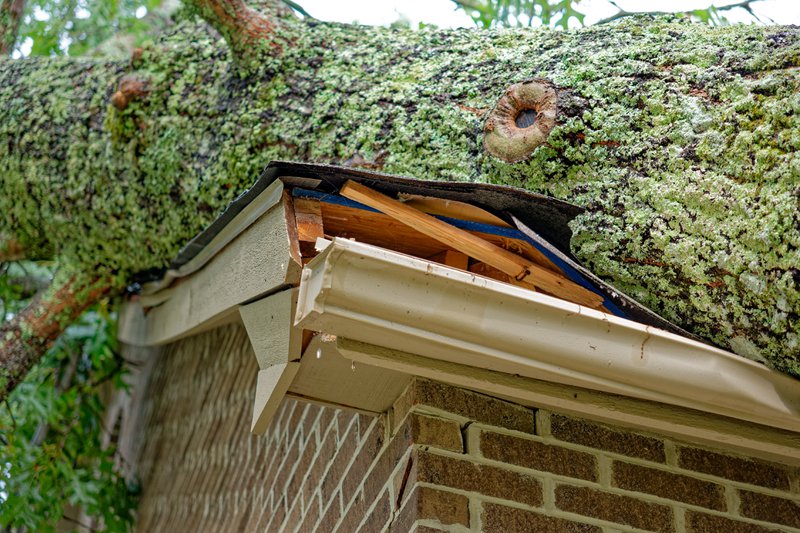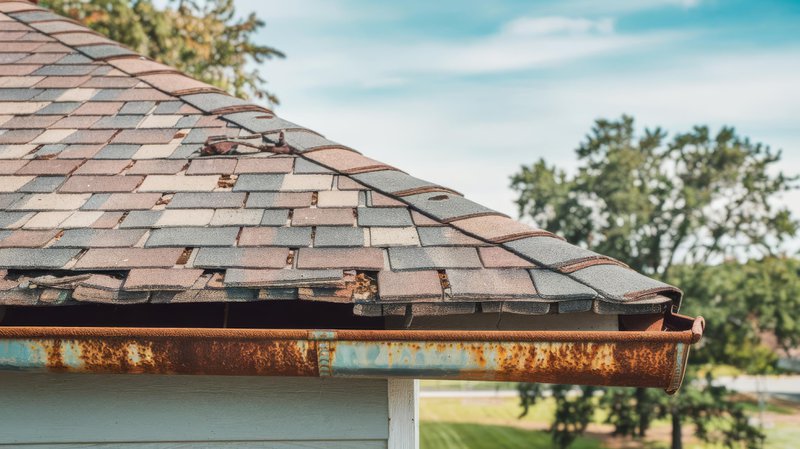By the end of the year, most property owners assume the window for filing storm damage claims has closed. Storm season, including wind, hail, and tornadoes, is usually over by then, but storm-related issues don’t always appear immediately, and neither do the insurance complications that follow. The truth is, it’s not too late to file a claim, especially if the damage wasn’t obvious right after the storm. In fact, many commercial and residential policyholders miss out on recovery funds simply because they don’t understand the timing, terminology, and traps set by their carriers.
If you're a facility manager, commercial contractor, or property management professional, this guide will walk you through what qualifies as late-discovered damage, how to avoid common filing mistakes, and how a public adjuster can help you reclaim control of the process.
Hidden Storm Damage Happens More Than You Think
While some losses are immediate, like shattered glass or ripped roofing, others emerge quietly over time. That’s especially true with water-related issues, which can take weeks or even months to manifest as visible ceiling stains, warped drywall, microbial contamination, or HVAC malfunctions.

Roofing systems may experience slow-developing leaks from high wind uplift. Electrical systems can develop corrosion from subtle moisture intrusion. HVAC units may degrade after taking in excess particulate matter. These are not rare outliers; they’re common, costly problems that insurers often try to classify as maintenance issues rather than legitimate storm damage.
That’s where supplemental storm damage claims come in.
What Are Supplemental Claims and When Do They Apply?
A supplemental claim is filed when additional or overlooked damage is discovered after the initial claim has been closed, or when the scope of damage expands over time. According to the Office of Program Policy Analysis and Government Accountability (OPPAGA), insurers frequently settle for amounts far below what policyholders are owed, relying on vague language and rushed inspections to avoid full payouts.
Even if you’ve already received a check from your carrier, you may still be entitled to more. Common triggers for supplemental storm damage claims include:
- Previously unseen structural damage (especially to roofing or walls)
- Hidden water damage that leads to microbial contamination
- Missed items in the original scope of loss
- Delays in discovery due to occupied buildings or inaccessible areas
- Improper cleanup or repairs completed without full drying or mitigation
Filing Late Storm Damage Claims Is Not the Same as Filing Wrong
Many commercial property owners assume that if they didn’t file a storm damage claim immediately, they’ve missed their chance. But late discovery isn’t late filing, and insurers are required to honor valid claims as long as you follow your policy’s provisions for proof of loss and notification.
The NAIC (National Association of Insurance Commissioners) emphasizes that policyholders have a duty to mitigate damage, document losses, and notify their carrier “promptly”, but that term is widely interpreted and rarely specific. If damage surfaces months after the storm, that clock often resets.
It’s essential to:
- Review your policy’s notice of loss language
- Take photos and videos of affected areas
- Retain contractor invoices and inspection reports
- Get professional moisture mapping and drying assessments
Don’t Let the Carrier Call the Shots Alone
One of the biggest mistakes in storm damage claims is accepting the first offer or worse, assuming the adjuster’s assessment is final. Insurance companies are not neutral evaluators. They are for-profit businesses tasked with minimizing payouts. As pointed out by experts, the entire industry is structured around discouraging and underpaying legitimate claims.
Too often, insurers label storm-related issues as pre-existing, cosmetic only, or a lack of maintenance. This miscategorization allows them to deny or underpay claims, even when policyholders provide strong documentation. Partnering with a licensed public insurance adjuster ensures that the damage is evaluated objectively and that your claim reflects the actual cost to restore the property.
Why Documentation is Everything (and What You Might Be Missing)
If your property suffered storm impact this year, now is the time to double-check for signs of:
- Moisture intrusion behind walls or under flooring
- Slow-forming electrical or HVAC issues
- Structural separation or cracking around the roofline
- Debris-related punctures on flat roofs
- Microbial contamination from insufficient drying
Don’t rely solely on what’s visible. Even advanced contractors miss underlying conditions without proper instruments. For commercial properties, moisture logs, humidity readings, and IR imaging can make or break a claim. Those elements are crucial not only for your reimbursement, but also for preserving indoor air quality and building integrity.

The Role of Public Insurance Adjusters in Delayed or Supplemental Storm Damage Claims
Public insurance adjusters are the only licensed professionals who work exclusively on behalf of policyholders, not the insurance company. Their job is to:
- Evaluate your policy and identify coverage opportunities
- Conduct a full inspection of all damage (including hidden and delayed impacts)
- Prepare a complete, itemized estimate based on real replacement costs
- Manage communication and negotiation with the insurance company
According to the APA (American Policyholder Association), policyholders who work with public adjusters typically recover significantly more than those who file alone. That difference is even greater when claims are delayed or previously denied.
When insurers delay, deny, or underpay, which they do on virtually every claim, a qualified public adjuster levels the field.
You’re Not Too Late, You’re Just Getting Started
Storm damage claims don’t disappear with the last storm of the season. They unfold, escalate, and sometimes get ignored. But that doesn’t mean it’s too late to take action. Commercial property managers and contractors can, and should, challenge lowball offers, revisit closed claims, and file supplemental claims for newly discovered damage.
Velocity Public Insurance Adjusters specializes in storm-related losses, particularly complex water damage, and holds IICRC certifications in Water Damage, Structural Drying, Fire Damage, and Smoke Damage. Let us help you uncover what the insurance company may have missed on purpose or by design. Schedule a call for a free claim and policy review today.
Claim Services We Provide
Velocity Public Insurance Adjusters handles a variety of claim types for both commercial and residential property losses: weather-related damage, theft and vandalism, fire and smoke damage.
Members of
Velocity Public Insurance Adjusters is a Certified Firm with the IICRC.
IICRC Certified Firms are known for their high level of technical experience and professionalism.
With the rapid increase in consumer calls due to the demand for mitigation and restoration projects,
Certified Firms are working in the field every day and have unmatched expertise in complex restoration projects.
Client testimonials
Don't take our word for it, see what our clients are saying about us.
Contact us
Schedule a free, no-obligation, claim and policy review. Every property claim is different, and we'd like the opportunity to provide you with an assessment of your unique situation.
- Indiana
- Kentucky
- Michigan
- Ohio
- Iowa
- Wisconsin
- South Carolina
Use of Information Purpose: We use your information to send mobile messages and respond to your inquiries as necessary. This may involve sharing your information with platform providers, phone companies, and other vendors who assist in message delivery.
Protection of Information: We do not sell, rent, loan, trade, lease, or otherwise transfer for profit any phone numbers or customer information collected through the SMS program to any third party.
Disclosure: We may disclose your information if required by law, regulation, or governmental request, to avoid liability, or to protect our rights or property.
Choices and Controls Consent: Consent to receive automated marketing text messages is not a condition of any service we provide.
Opt-Out: You can opt out of receiving further text messages via the Messaging Service by responding to any of our text messages with any of the following replies: STOP, END, CANCEL, UNSUBSCRIBE, or QUIT.
Your Responsibilities Accurate Information: Ensure that the information you provide is accurate, complete, and truthful. Do not use a false or misleading name or a name you are not authorized to use.
Consequences: If we believe the information provided is untrue, inaccurate, or incomplete, or if you have joined the program for ulterior motives, we may deny you access to the program.












